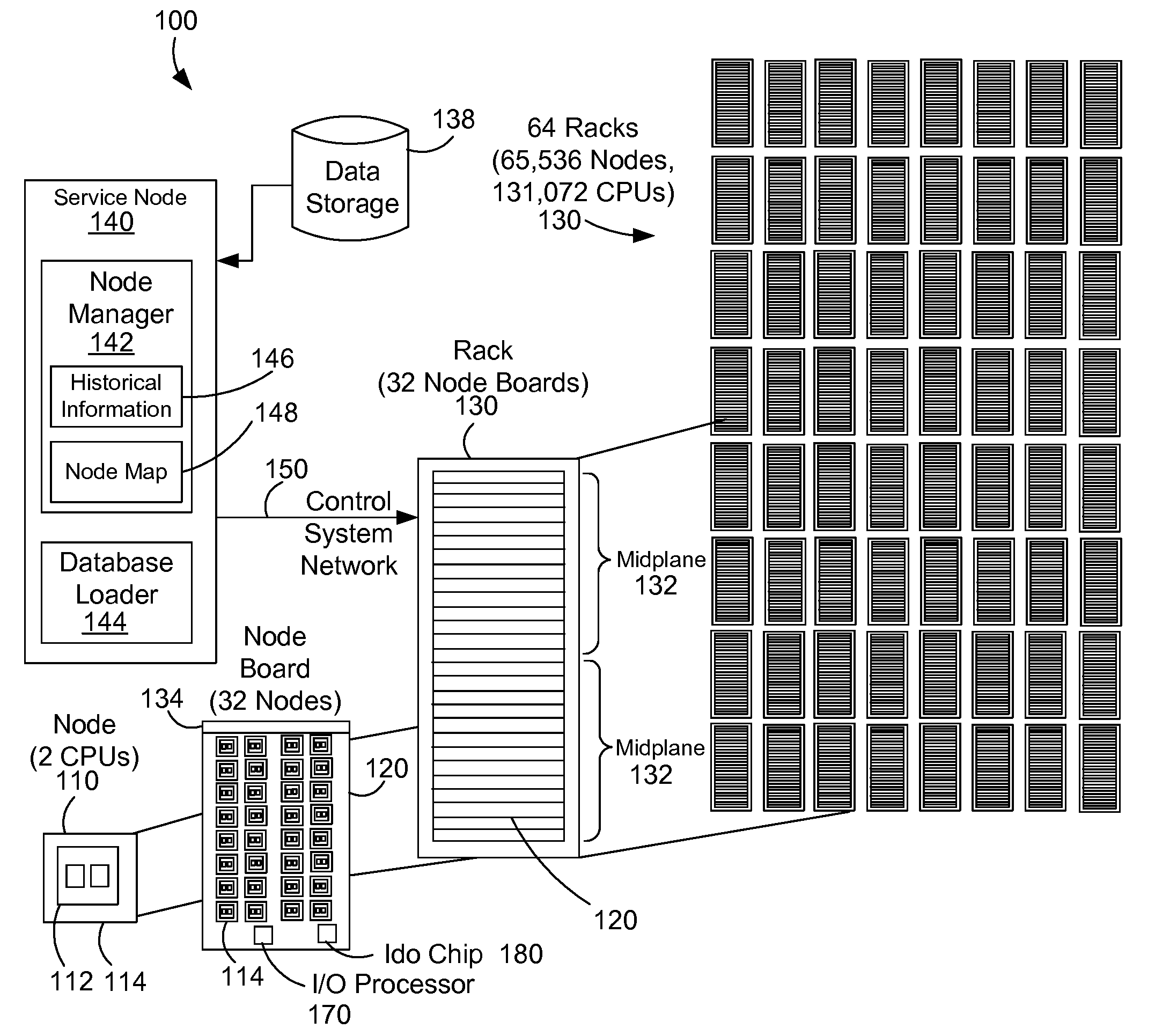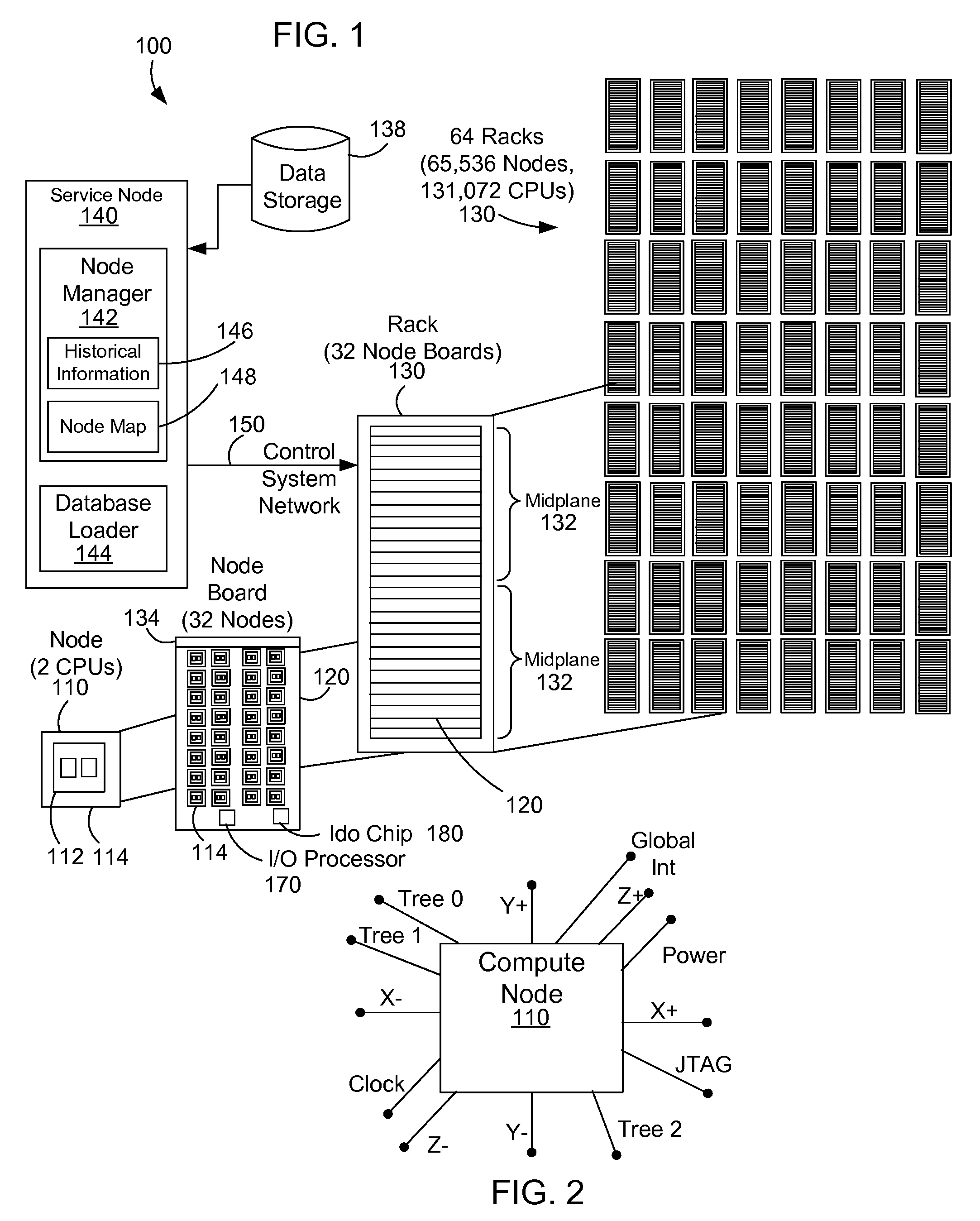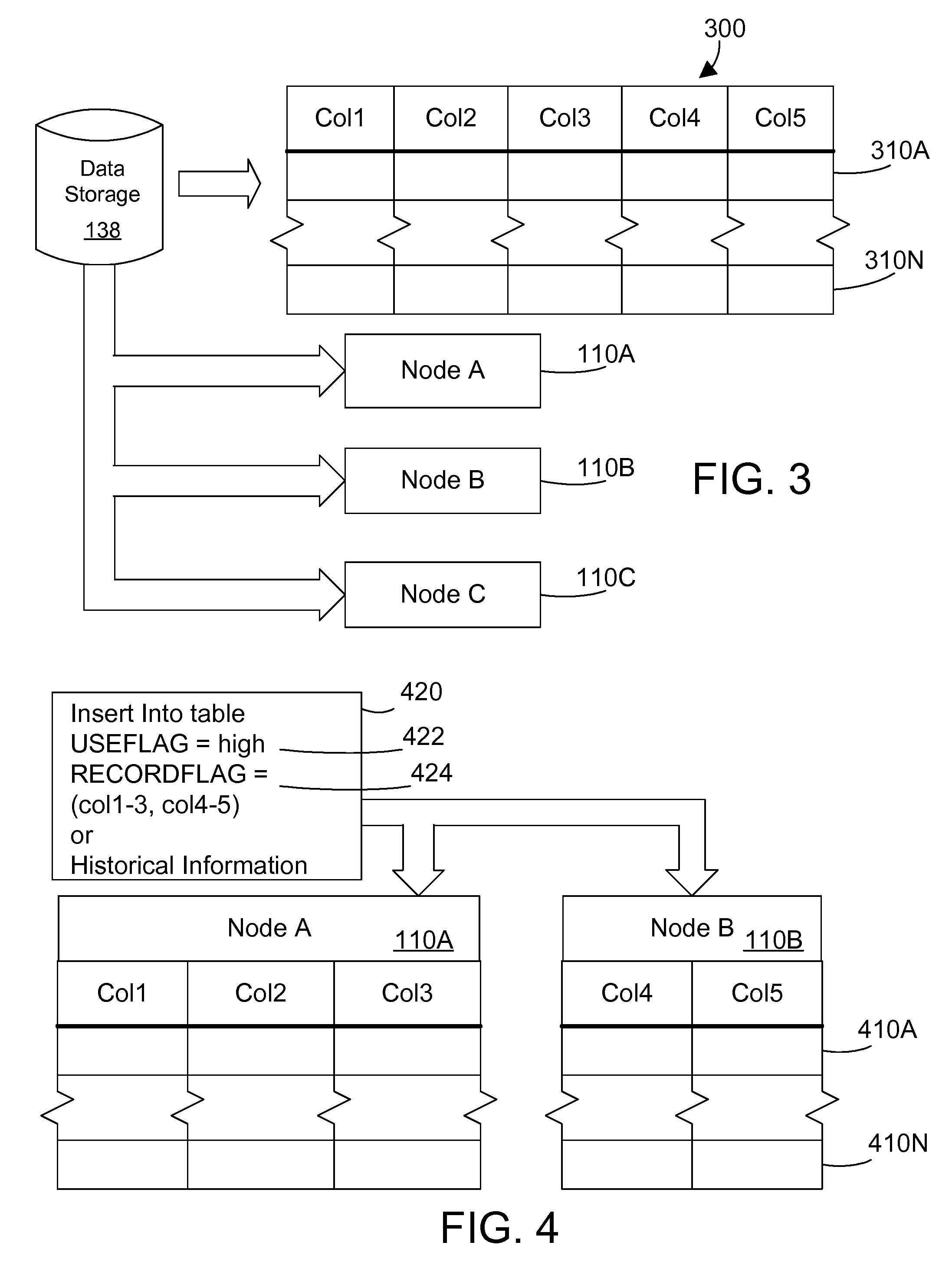Inserting data into an in-memory distributed nodal database
a nodal database and data technology, applied in relational databases, database models, instruments, etc., can solve the problems that parallel computer systems will not be able to fully utilize the potential power of in-memory databases, and the in-memory database poses new challenges, so as to achieve the effect of clustering data attributes
- Summary
- Abstract
- Description
- Claims
- Application Information
AI Technical Summary
Benefits of technology
Problems solved by technology
Method used
Image
Examples
Embodiment Construction
[0029]The description and claims herein are directed to a method and apparatus for pre-loading an in-memory database in a parallel computing system. The examples herein will be described with respect to the Blue Gene / L massively parallel computer developed by International Business Machines Corporation (IBM). A database loader uses SQL flags and historical information gained from monitoring prior query execution times and patterns to determine how to effectively cluster data attributes across multiple nodes. The database loader can also utilize node and network configuration information to determine how to cluster the data attributes. The node manager may also allow a system administrator to force placement of structures in particular nodes.
[0030]FIG. 1 shows a block diagram that represents a massively parallel computer system 100 such as the Blue Gene / L computer system. The Blue Gene / L system is a scalable system in which the maximum number of compute nodes is 65,536. Each node 110...
PUM
 Login to View More
Login to View More Abstract
Description
Claims
Application Information
 Login to View More
Login to View More - R&D
- Intellectual Property
- Life Sciences
- Materials
- Tech Scout
- Unparalleled Data Quality
- Higher Quality Content
- 60% Fewer Hallucinations
Browse by: Latest US Patents, China's latest patents, Technical Efficacy Thesaurus, Application Domain, Technology Topic, Popular Technical Reports.
© 2025 PatSnap. All rights reserved.Legal|Privacy policy|Modern Slavery Act Transparency Statement|Sitemap|About US| Contact US: help@patsnap.com



